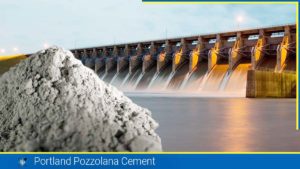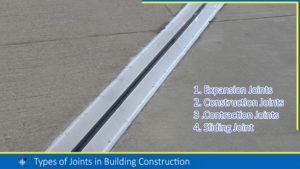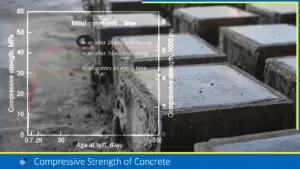Terrazzo flooring is a great choice if you’re seeking both decorative appeal and wear resistance in your flooring materials. As a result, it’s a popular choice for flooring in a variety of settings, including residential buildings, hospitals, offices, schools, and other public spaces. In the following article, we’ll discuss the materials and procedures involved in laying terrazzo flooring.
What is Terrazzo Flooring?
Terrazzo flooring is a type of flooring that is made by mixing small pieces of marble, granite, quartz, or other materials with a binder, such as cement or epoxy resin, and then polishing the surface until it is smooth and shiny. The result is a durable and beautiful flooring option that is commonly used in commercial and residential settings.
It became particularly popular in the mid-20th century when it was used extensively in commercial buildings, such as schools, hospitals, and government buildings. However, it is also gaining popularity, in the form of tiles and in situ construction due to its durability, versatility, and unique aesthetic appeal.
Terrazzo flooring is laid in a thin layer on top of the base concrete or structure slab with the embedded dividing strip. This strip helps to prevent the cracking in flooring.
Materials and Specifications
1. Aggregate
The aggregates for topping in terrazzo flooring shall be marble chips, quartz, granite, and glass with sizes varying from 1 mm to 25 mm. The marble powder used in the terrazzo topping shall pass through the sieve size of 300-micron. The aggregates should be hard, sound, dense and homogeneous in texture.
Also, read: Fine Aggregate for Concrete: 3 Classification, Properties and Characteristics
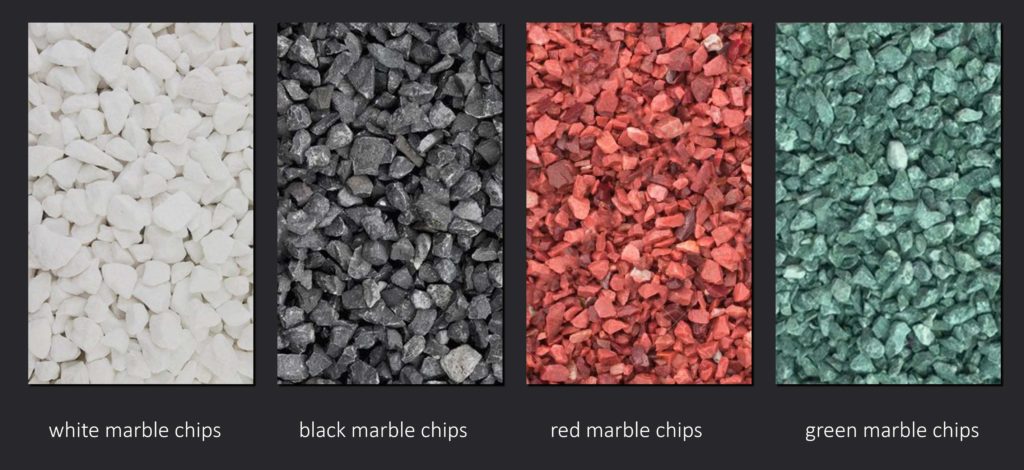
2. Cement
Ordinary Portland Cement, Portland Slag Cement, and Portland Pozzolana Cement are recommended cement for terrazzo flooring.
Also, read: Portland Cement: Properties, Composition, Manufacturing Types and Uses
3. Pigments
The pigments to be used in the terrazzo flooring shall be of permanent colour. The proportion of colour pigment with cement shall conform to the requirements mentioned in Table 1.
| Colour | Pigment to be used | Proportion of pigment | Proportion of cement | Proportion of white cement |
|---|---|---|---|---|
| Red | Red oxide of iron | 1 | 15-20 | Nil |
| Black | Carbon black | 1 | 25-40 | Nil |
| Bottle Green | Green Chromium oxide | 1 | 15-30 | Nil |
| Pink | Red Oxide | 1 | Nil | 100-300 |
| Cream | Yellow oxide of iron | 1 | Nil | 100-400 |
| Yellow | Yellow oxide of iron | 1 | Nil | 25-75 |
| Light Green | Green chromium | 1 | Nil | 50-150 |
| French Grey | — | Nil | 1 to 2 | 1 |
| Fawn | Yellow oxide of iron | 1 | 6 | 4 |
Also, read: 12 Properties of Good Building Stone: Comprehensive Guide
4. Dividing Strips
The material for dividing strips should be similar to the flooring that has wear resistance. The material of the dividing strips will be aluminium, brass, copper, glass, plastic or similar materials. The strips will be protected with a layer of bitumen. The size of the strip should not be less than 1.5mm thick and not less than 25mm wide.
5. Water
The water used for mixing and curing should be clean and free from injurious amounts of oils, acids, alkalis, salts, sugar, organic materials or other substances that may be deleterious to concrete.
Specification for In-situ Terrazzo Flooring / Design Consideration
- Arrangement: –
The terrazzo finish consists of a topping and underlayer which is laid over a concrete or cushioning layer. When the terrazzo topping is laid on the different materials shall be done as shown in Figure 1. The sub-base should be a well-consolidated and compacted layer of earth or sand. The cushioning layer should be lime concrete and the base concrete should be lean concrete of a mix ratio of 1:5:10. If the terrazzo topping is laid on the structure slab, the arrangement should be done as shown in Figure 2.
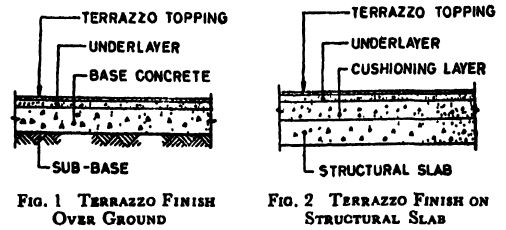
2. Thickness: –
The thickness of the base concrete and cushioning layer shall not be less than 100 mm and 75 mm respectively. The thickness of the terrazzo topping should be as in Table 2.
| Size of chips (mm) | Minimum thickness (mm) |
|---|---|
| 1 to 2 2 to 4 | 6 |
| 4 to 7 | 9 |
| 7 to 10 | 12 |
| > 10 | not less than 1 1/3 times the maximum size of chips. |
3. Mix the Proportion
The mix for terrazzo topping shall consist of cement, with or without pigment, marble aggregate, and water. The mix proportion should be 3 parts of cement and 1 part of marble power by mass. To mix, the aggregate should be mixed as prescribed in Table 3.
| Size of Aggregate/chips (mm) | The proportion of Aggregate of Binder Mix Parts |
|---|---|
| 1 to 7 | 1 3/4 |
| 7 to 15 15 to 25 | 1 1/2 |
Methodology for Laying Terrazzo Flooring (In-situ construction)
Under layer
Cement concrete of a specified mix shall be used and the specifications given under cement concrete work shall apply. The panels shall be of uniform size, not exceeding 2 sq.m in area and 2 m in length in inside situations. In exposed situations, the length of any side of the panel shall not be more than 1.2 meters. Cement slurry @ 2.00 kg per sq.m shall be applied before laying underlayer over the cement concrete/R.C.C. surface.
Strip Fixing:
The strip is provided to prevent the continuous cracking of the terrazzo slab. A glass strip of 4 mm or 2 mm aluminium strips is fixed with their top at the proper level, giving slopes.
Laying Terrazzo Topping:
The mix for terrazzo topping shall consist of cement with or without pigment, marble powder, marble aggregate (marble chips) and water. The cement and marble powder shall be mixed in the proportion of 3 parts of cement to one part of marble powder by weight.
Polishing:
Polishing shall be done by machine. About 36 hours after laying the top layer, the surface shall be watered and ground evenly with a machine fitted with a special rapid-cutting grit block (carborundum stone) of coarse grade (No.60) till the marble chips are evenly exposed and the floor is smooth. After the first grinding, the surface shall be thoroughly washed to remove all grinding mud and covered with a grout of cement or/and colouring matter in the same mix and proportion as the topping in order to fill any pin holes that appear.
The surface shall be allowed to cure for 5 to 7 days. The machine ground fitted with fine-grit blocks (No.120). The surface is cleaned and repaired as before and allowed to cure again for 3 to 5 days. Finally, the third grinding shall be done with a machine fitted with fine-grade grit blocks (No.320) to get an even and smooth surface without pinholes. The finished surface should show the marble chips evenly exposed.
Where the use of the machine for polishing is not feasible or possible rubbing and polishing shall be done by hand, in the same manner as specified for machine polishing except for that carborundum stone of coarse grade (No.60) shall be used for the 1st rubbing, stone of medium grade (No.80) for second rubbing and stone of fine grade (No.120) for final rubbing and polishing.
After the final polish oxalic acid shall be dusted over the surface at the rate of 33 gm per square meter sprinkled with water and rubbed hard with a pad of Woollen rags. The following day the floor shall be wiped with a moist rag and dried with a soft cloth and finished clean.
Curing:
Curing shall be done by suitable means such as laying moist sawdust or ponding water.
Advantages of Terrazzo Flooring
There are several advantages to choosing terrazzo flooring for your space, including:
- Durability: Terrazzo flooring is incredibly durable and can withstand heavy foot traffic, making it a practical choice for high-traffic areas.
- Aesthetic appeal: Terrazzo flooring can be customized to create a wide range of patterns and colours, allowing for unique and eye-catching designs.
- Low maintenance: Terrazzo flooring is easy to clean and maintain, requiring only periodic sealing and polishing to keep it looking its best.
- Long lifespan: With proper maintenance, terrazzo flooring can last for decades, making it a cost-effective flooring option in the long run.
- Eco-friendly: Terrazzo flooring is made from recycled materials, making it a sustainable flooring option that can help reduce waste.
- Hygienic: Terrazzo flooring is non-porous and resistant to bacteria, making it a great choice for hospitals and other healthcare facilities.
FAQs
Q: What is terrazzo flooring?
Ans: Terrazzo flooring is a floor finish that is laid in a thin layer on top of a concrete base and it consists of marble chips, cement (white/grey), dividing strips, and pigment which may or may not be used.
Q: What are the advantages of terrazzo flooring?
Ans: The advantages of terrazzo flooring are: –
1. Durability
2. Aesthetic appeal
3. Good wear resistance properties.
4. Environmental friendly
5. Low maintenance
6. Hygienic
Q: What is the thickness of the terrazzo flooring?
Ans: The top layer may be 40 mm thick consisting of a 34 mm thick cement concrete layer laid over the base concrete and a 6 mm thick terrazzo topping.
![]()





